TYPES AND KINDS OF SYSTEMIC RELATIONS 1. PARADIGMATIC

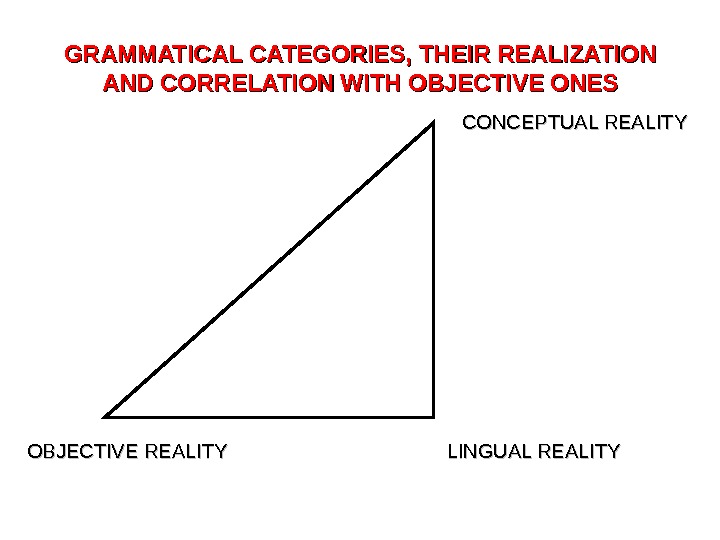
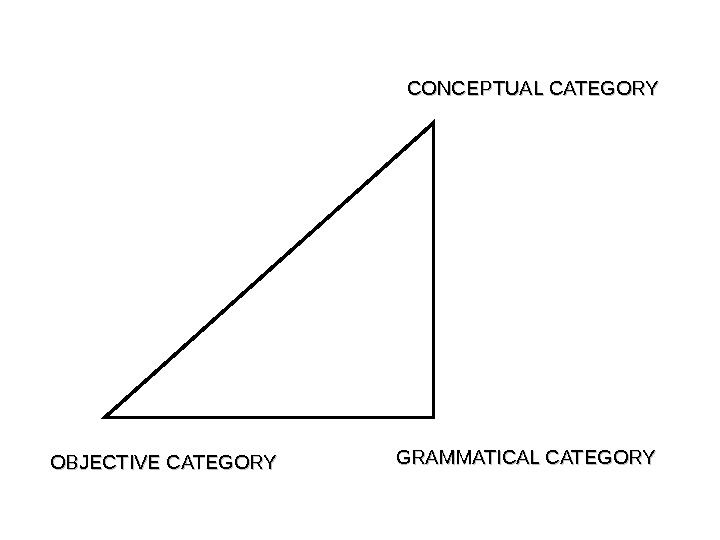
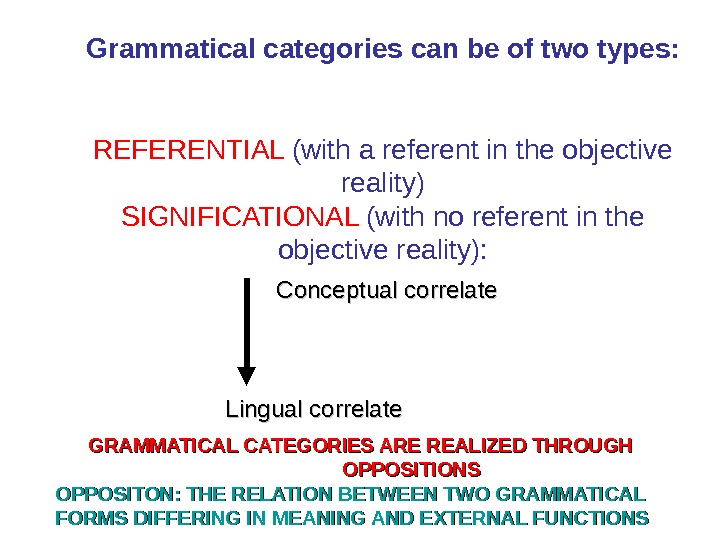
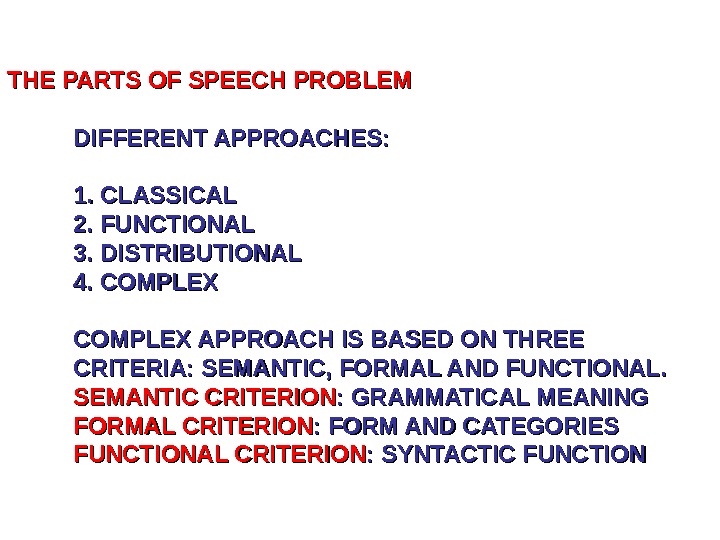
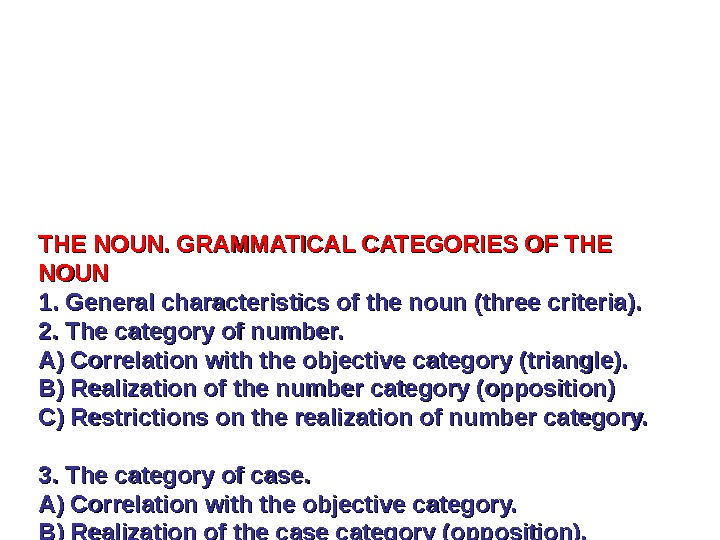
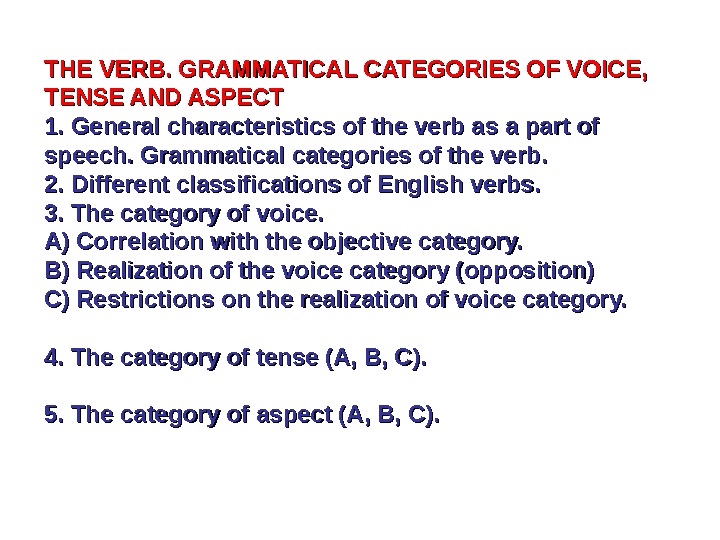


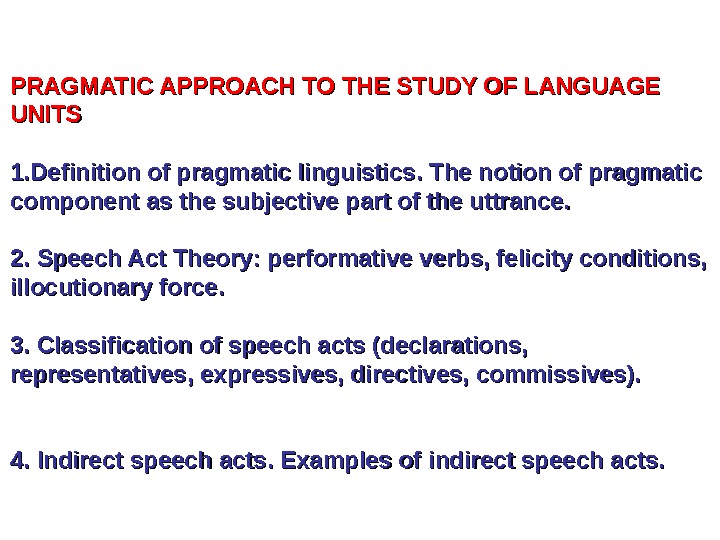
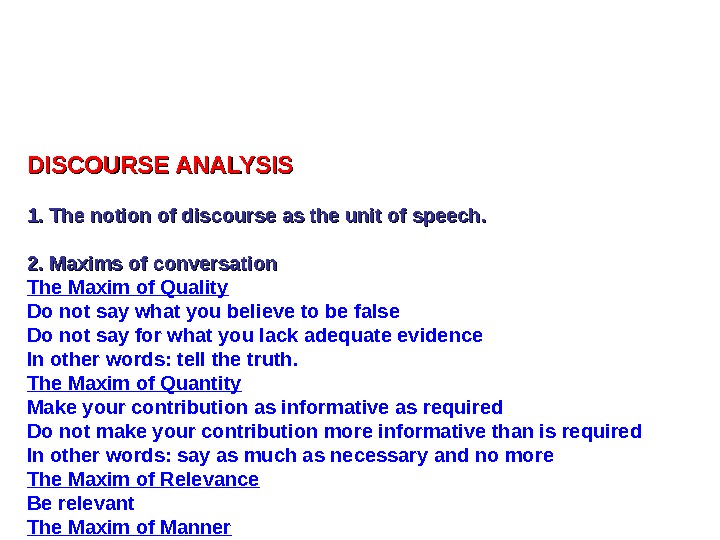
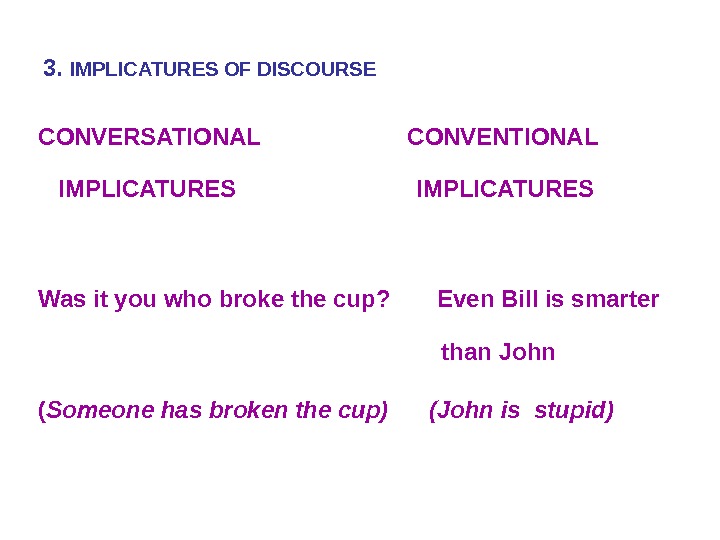
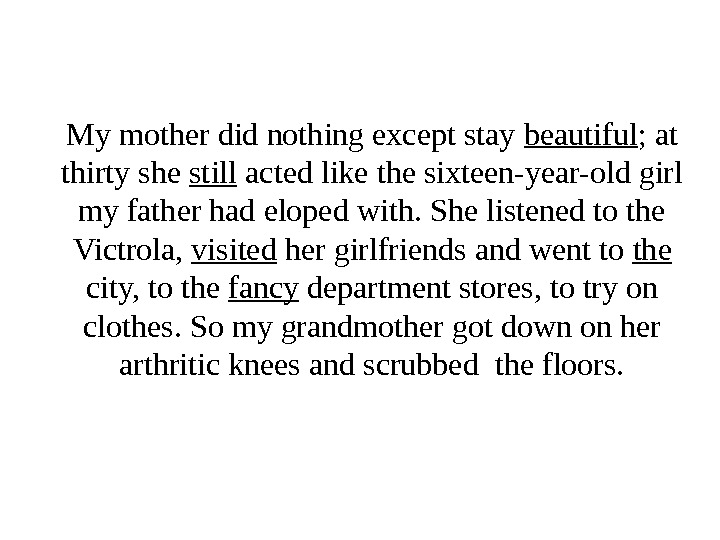
presentation-revision_lecture.ppt
- Размер: 67 Кб
- Количество слайдов: 13
Описание презентации TYPES AND KINDS OF SYSTEMIC RELATIONS 1. PARADIGMATIC по слайдам
 TYPES AND KINDS OF SYSTEMIC RELATIONS 1. PARADIGMATIC RELATIONS – VERTICAL SYSTEMIC RELATIONS BASED ON THE PRINCIPLE OF SIMILARITY AND OBSERVED IN LANGUAGE. THREE TYPES OF PR: SEMANTIC, FORMAL AND FUNCTIONAL. 2. SYNTAGMATIC RELATIONS – LINEAR RELATIONS BETWEEN LINGUISTIC UNITS OBSERVED IN SPEECH. THREE TYPES OF SR: COORDINATION, SUBORDINATION, PREDICATION.
TYPES AND KINDS OF SYSTEMIC RELATIONS 1. PARADIGMATIC RELATIONS – VERTICAL SYSTEMIC RELATIONS BASED ON THE PRINCIPLE OF SIMILARITY AND OBSERVED IN LANGUAGE. THREE TYPES OF PR: SEMANTIC, FORMAL AND FUNCTIONAL. 2. SYNTAGMATIC RELATIONS – LINEAR RELATIONS BETWEEN LINGUISTIC UNITS OBSERVED IN SPEECH. THREE TYPES OF SR: COORDINATION, SUBORDINATION, PREDICATION.
 GRAMMATICAL CATEGORIES, THEIR REALIZATION AND CORRELATION WITH OBJECTIVE ONES CONCEPTUAL REALITY LINGUAL REALITY OBJECTIVE REALITY
GRAMMATICAL CATEGORIES, THEIR REALIZATION AND CORRELATION WITH OBJECTIVE ONES CONCEPTUAL REALITY LINGUAL REALITY OBJECTIVE REALITY
 OBJECTIVE CATEGORY GRAMMATICAL CATEGORY CONCEPTUAL CATEGORY
OBJECTIVE CATEGORY GRAMMATICAL CATEGORY CONCEPTUAL CATEGORY
 Grammatical categories can be of two types: REFERENTIAL (with a referent in the objective reality) SIGNIFICATIONAL (with no referent in the objective reality): Conceptual correlate Lingual correlate GRAMMATICAL CATEGORIES ARE REALIZED THROUGH OPPOSITIONS OPPOSITON: THE RELATION BETWEEN TWO GRAMMATICAL FORMS DIFFERING IN MEANING AND EXTERNAL FUNCTIONS
Grammatical categories can be of two types: REFERENTIAL (with a referent in the objective reality) SIGNIFICATIONAL (with no referent in the objective reality): Conceptual correlate Lingual correlate GRAMMATICAL CATEGORIES ARE REALIZED THROUGH OPPOSITIONS OPPOSITON: THE RELATION BETWEEN TWO GRAMMATICAL FORMS DIFFERING IN MEANING AND EXTERNAL FUNCTIONS
 THE PARTS OF SPEECH PROBLEM DIFFERENT APPROACHES: 1. CLASSICAL 2. FUNCTIONAL 3. DISTRIBUTIONAL 4. COMPLEX APPROACH IS BASED ON THREE CRITERIA: SEMANTIC, FORMAL AND FUNCTIONAL. SEMANTIC CRITERION : GRAMMATICAL MEANING FORMAL CRITERION : FORM AND CATEGORIES FUNCTIONAL CRITERION : SYNTACTIC FUNCTION
THE PARTS OF SPEECH PROBLEM DIFFERENT APPROACHES: 1. CLASSICAL 2. FUNCTIONAL 3. DISTRIBUTIONAL 4. COMPLEX APPROACH IS BASED ON THREE CRITERIA: SEMANTIC, FORMAL AND FUNCTIONAL. SEMANTIC CRITERION : GRAMMATICAL MEANING FORMAL CRITERION : FORM AND CATEGORIES FUNCTIONAL CRITERION : SYNTACTIC FUNCTION
 THE NOUN. GRAMMATICAL CATEGORIES OF THE NOUN 1. 1. General characteristics of the noun (three criteria). 2. The category of number. A) Correlation with the objective category (triangle). B) Realization of the number category (opposition) C) Restrictions on the realization of number category. 3. The category of case. A) Correlation with the objective category. B) Realization of the case category (opposition). C) Restrictions on the realization of the category of case.
THE NOUN. GRAMMATICAL CATEGORIES OF THE NOUN 1. 1. General characteristics of the noun (three criteria). 2. The category of number. A) Correlation with the objective category (triangle). B) Realization of the number category (opposition) C) Restrictions on the realization of number category. 3. The category of case. A) Correlation with the objective category. B) Realization of the case category (opposition). C) Restrictions on the realization of the category of case.
 THE VERB. GRAMMATICAL CATEGORIES OF VOICE, TENSE AND ASPECT 1. General characteristics of the verb as a part of speech. Grammatical categories of the verb. 2. Different classifications of English verbs. 3. The category of voice. A) Correlation with the objective category. B) Realization of the voice category (opposition) C) Restrictions on the realization of voice category. 4. The category of tense (A, B, C). 5. The category of aspect (A, B, C).
THE VERB. GRAMMATICAL CATEGORIES OF VOICE, TENSE AND ASPECT 1. General characteristics of the verb as a part of speech. Grammatical categories of the verb. 2. Different classifications of English verbs. 3. The category of voice. A) Correlation with the objective category. B) Realization of the voice category (opposition) C) Restrictions on the realization of voice category. 4. The category of tense (A, B, C). 5. The category of aspect (A, B, C).
 THE SENTENCE AND THE UTTERANCE 1. Definition of the sentence. 2. Different approaches to the sentence analysis: traditional, IC analysis, constructional analysis. 3. The sentence vs. the utterance. 4. The theme and the rheme as the main categories of the utterance. 5. Language means of expressing the rheme.
THE SENTENCE AND THE UTTERANCE 1. Definition of the sentence. 2. Different approaches to the sentence analysis: traditional, IC analysis, constructional analysis. 3. The sentence vs. the utterance. 4. The theme and the rheme as the main categories of the utterance. 5. Language means of expressing the rheme.
 MAIN FEATURES AND CATEGORIES OF THE TEXT 1. 1. Definition of the text. 2. Categories of the text: coherence, cohesion, deixis. 3. The notion of coherence as a semantic and topical unity of the text. Means of achieving textual coherence. 4. The notion of cohesion as a formal succession of sentences. Means of achieving textual cohesion. 5. The notion of deixis (identification by pointing). Textual deictic markers (person, place, temporal, textual, social).
MAIN FEATURES AND CATEGORIES OF THE TEXT 1. 1. Definition of the text. 2. Categories of the text: coherence, cohesion, deixis. 3. The notion of coherence as a semantic and topical unity of the text. Means of achieving textual coherence. 4. The notion of cohesion as a formal succession of sentences. Means of achieving textual cohesion. 5. The notion of deixis (identification by pointing). Textual deictic markers (person, place, temporal, textual, social).
 PRAGMATIC APPROACH TO THE STUDY OF LANGUAGE UNITS 1. Definition of pragmatic linguistics. The notion of pragmatic component as the subjective part of the uttrance. 2. Speech Act Theory: performative verbs, felicity conditions, illocutionary force. 3. Classification of speech acts (declarations, representatives, expressives, directives, commissives). 4. Indirect speech acts. Examples of indirect speech acts.
PRAGMATIC APPROACH TO THE STUDY OF LANGUAGE UNITS 1. Definition of pragmatic linguistics. The notion of pragmatic component as the subjective part of the uttrance. 2. Speech Act Theory: performative verbs, felicity conditions, illocutionary force. 3. Classification of speech acts (declarations, representatives, expressives, directives, commissives). 4. Indirect speech acts. Examples of indirect speech acts.
 DISCOURSE ANALYSIS 1. The notion of discourse as the unit of speech. 2. Maxims of conversation The Maxim of Quality Do not say what you believe to be false Do not say for what you lack adequate evidence In other words: tell the truth. The Maxim of Quantity Make your contribution as informative as required Do not make your contribution more informative than is required In other words: say as much as necessary and no more The Maxim of Relevance Be relevant The Maxim of Manner Be clear Be orderly
DISCOURSE ANALYSIS 1. The notion of discourse as the unit of speech. 2. Maxims of conversation The Maxim of Quality Do not say what you believe to be false Do not say for what you lack adequate evidence In other words: tell the truth. The Maxim of Quantity Make your contribution as informative as required Do not make your contribution more informative than is required In other words: say as much as necessary and no more The Maxim of Relevance Be relevant The Maxim of Manner Be clear Be orderly
 3. IMPLICATURES OF DISCOURSE CONVERSATIONAL CONVENTIONAL IMPLICATURES Was it you who broke the cup? Even Bill is smarter than John ( Someone has broken the cup) (John is stupid)
3. IMPLICATURES OF DISCOURSE CONVERSATIONAL CONVENTIONAL IMPLICATURES Was it you who broke the cup? Even Bill is smarter than John ( Someone has broken the cup) (John is stupid)
 My mother did nothing except stay beautiful ; at thirty she still acted like the sixteen-year-old girl my father had eloped with. She listened to the Victrola, visited her girlfriends and went to the city, to the fancy department stores, to try on clothes. So my grandmother got down on her arthritic knees and scrubbed the floors.
My mother did nothing except stay beautiful ; at thirty she still acted like the sixteen-year-old girl my father had eloped with. She listened to the Victrola, visited her girlfriends and went to the city, to the fancy department stores, to try on clothes. So my grandmother got down on her arthritic knees and scrubbed the floors.
